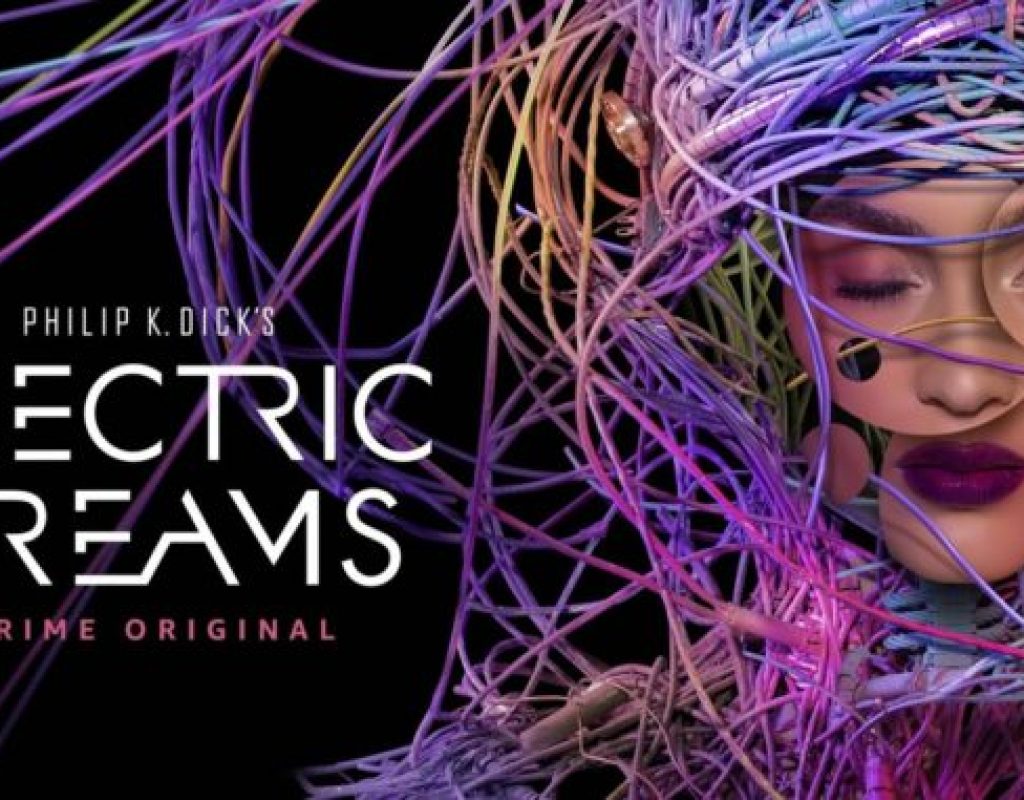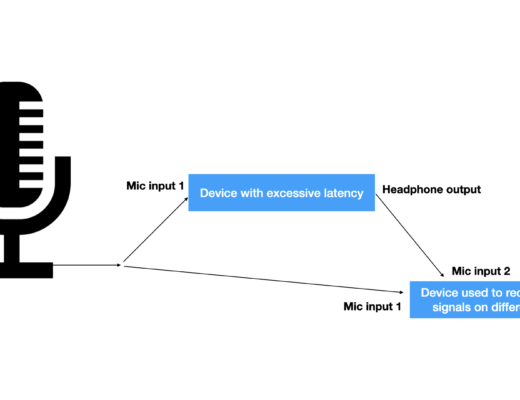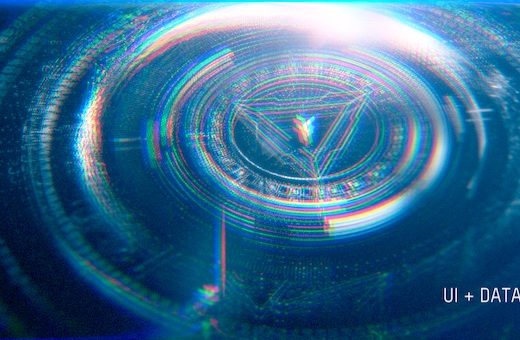Electric Dreams is an apt title for the new anthology series for television, created from the short stories of Philip K. Dick. Dick’s works offer a sci-fi worldview about the intersection of humanity and technology that is perhaps even more relevant today than when they were originally written. A prolific author, lost to an early death, he published over 40 novels as well as over 100 short stories during his lifetime. Some of the works inspired by his specific worldview include the Blade Runner films, Total Recall, Minority Report, another Amazon series The Man in High Castle and many more.
With all of the high profile, sci-fi programming available everywhere these days, Electric Dreams lands squarely on top. Featuring stellar performances from actors like Bryan Cranston and Steve Buscemi, Juno Temple and Anna Paquin, along with great scripts, and creative directors like show runner Michael Dinner and Peter Horton, this series is super-charged with talent.
 Veteran supervising sound editor Mark Lanza put together an ace crew for the post production audio team. The sci-fi genre is a particularly rich palette for sound designers to birth new worlds across the sonic landscape. For Electric Dreams, every aspect of the sound of these new universes was created fresh. Since each episode is a disparate story, with no connection other than the author, the sound team does not have the luxury of using similar sounds across the series. As Mark explains…
Veteran supervising sound editor Mark Lanza put together an ace crew for the post production audio team. The sci-fi genre is a particularly rich palette for sound designers to birth new worlds across the sonic landscape. For Electric Dreams, every aspect of the sound of these new universes was created fresh. Since each episode is a disparate story, with no connection other than the author, the sound team does not have the luxury of using similar sounds across the series. As Mark explains…
“The directors only knew about their own episodes. They had no idea what the other episodes were doing. Some of the episodes were not only apart from each other in terms of storyline or planet, but also separated by time, by hundreds or even thousands of years in some of the episodes, in some of them you didn’t know how far in the future.”
Each episode is contained in its own unique world, unique time and space. Since thematically each episode deals with technology – with completely different computers or interfaces, different robots or transportation vehicles, for instance, there was no way to create a sound effects library to draw from for the series as a whole.

Not only that, the mythology inside of each episode had its own quirks and logic. For instance, the episode called Impossible Planet featured a well-worn space ship, that was an old touring ship used to transport people between galaxies. Mark describes the attention to that specific audio detail from the episode –
“There we had a spaceship that was older, beat up, like a daily rental space ship, that took tourists up into space, to show them how cool it was. It was almost like the TMZ tour bus of space vehicles. But yet it had to be modern enough, since in this future, space travel was a routine thing. It did go between galaxies. You had to make it modern yet retro at the same time.
Then there was the robot. It had been around a while. He was not a new robot. So, he had to have a little bit of clunkiness to him but, yet, he was almost human. He had that moment where he even called out the hypocrisy of the human guy. He was a thinking robot. He was pretty advanced. You had to balance all of that when you are designing the effects. You wanted the doors to be interesting. You didn’t want it to sound like Star Trek. It all needed to stand on its own. Then you had to mix so it would blend with the other episodes. That was a very difficult one to design. ”
Each episode has such varied environments, that the sound adds a clear contribution to the telling of the individual stories. I went back and listened through each episode for all of the telling details and how specific sounds varied from episode to episode, determining the sonic universe of that particular story. Besides the great scripts, production design, visual effects and picture editing, it’s particularly worth listening acutely to the soundtracks as well.
For instance, every episode features some sort of computing device or computing interface, yet each has their own specific set of sounds and their own set of rules for usage. In terms of transportation and vehicles, the trains in the wonderful episode with Timothy Spall called, The Commuter, sound very different than the trains in the episode, Safe and Sound or the subway in the episode Kill All Others. In the episode called Autofac, the world was crippled by nuclear annihilation. That meant the sound could contain no birds or crickets for the background and atmosphere sounds since they no longer existed in that world.
For those audiences who ask what sound editing and what sound mixing add to a program, I often suggest watching a sci-fi movie without the sound. The soundtrack helps define time, space and intent. Is the sound complex and full, or is it quiet and foreboding? Do all the computers and robots seem friendly or menacing? Do the star ships sound like they are moving through space? I would suggest that a serious study of this series would reveal the complex influence of sound to story.

The directors also contributed very distinct ideas regarding the sound effects for their individual episodes. Peter Horton, director of the Autofac episode had a very specific idea of the sound of a character dubbed “the Watcher.” Mark explains –
“Peter really had a big influence on that sound, he wanted it to sound fluttery – it needed to be mysterious, cool and fluttery. I sent ideas for that to the picture editor and he was giving yes’s and no’s until we came up with that final design.
For the sound of the Watcher, I was looking for a flipping sign sound, like a train station sign sound. I couldn’t find any clean ones. Good luck finding someone who has one! No one uses them anymore. I took one that had a crowd sounds behind it and used iZotope’s RX to pull out the voices and just keep the sound of the sign. That was a main element in the Watcher for his reveal noise. It was a combination of the sign, a pigeon and a rattlesnake.”
The music in the series is perfectly partnered with the sound design. It boasts the scores of Bear McCreary, Harry Gregson Williams and uber electronica producer BT. Typically, a series will have a specifically designed sound effects library, and at least some temporary music cues from the series composer, as a starting place for sound and music design. As Mark discusses –

“Everything was composed fresh per episode. It was good, in that they knew what they were scoring to, it was bad, in that there was nothing that you could pull from, no other episode. You couldn’t just grab a piece of music from one episode and throw it into another because – it just wasn’t going to match at all. So, Brittany DuBay and Michael Ryan had to get creative if they needed to change a piece if it wasn’t working. Some of it we had stems, but some of it we did not. However, working with a team like that makes things easy.
I wasn’t editing any of the music, but we [the sound effects design] had to play against it. I’m not one of those that insists that my stuff has to play. Whatever is best for the story. Every once in a while I might feel that an effect helps the story and the music is stepping on it. But there were other times that I said – pull out my effects and bring up the music.
In the episode “The Hood Maker” when her friend is singing London’s Burning over the shots of all the violence – we built everything, we built the riot, we built the guy getting beaten up in the alley, we had ADR, we had effects, but we just went into the song and all of that [sound design] went away. It really sucked you into the moment. It was a lot of work to build it all, but it was a great sound choice to lose it and to just get into that moment.”
 Mark came into sound through an early interest in computing and computer programming. While studying computers he met someone who was getting into sound with computers. Together they teamed up, and their first job was working on the Oliver Stone film Born on the 4th of July, using the Waveframe 1000, the sampler based version since the disk based version wasn’t fast enough.
Mark came into sound through an early interest in computing and computer programming. While studying computers he met someone who was getting into sound with computers. Together they teamed up, and their first job was working on the Oliver Stone film Born on the 4th of July, using the Waveframe 1000, the sampler based version since the disk based version wasn’t fast enough.
Mark’s long history with computers has informed his work in sound design and sound effects. Dick’s unique point of view on the intersection of technology and humanity inspired Mark’s work. For instance, Mark understood the subtle power of the eye blink. When designing the very lifelike robot in Autofac, on the mix stage he knew what to do. Mark explains –
“I suggested raising up the blinking of the robot’s eyes – the servos when she moved, and the head, were barely audible – but the eyes, the blink of the eyes, I asked to play them louder. That’s the window of the soul. Just to reinforce that she is a robot. She is very intelligent, she is talking, and you lose track sometimes that she is really a robot. She looks like a person, but when she blinks – it brings you back. You realize that she’s not human. That was a good moment, one of my favorites of our work.”
There is no doubt that Dick’s musings will be mined for many years to come. Considering the breadth of Dick’s writing and the interpretations of it, several episodes could be sourced by a single story. Here’s hoping that Amazon gives show runner Michael Dinner a chance to create many more episodes under the banner of Electric Dreams, along with Mark Lanza and his team to create those new universes with sound.
 Mark A. Lanza MPSE is a sound designer and supervisor for Sony Pictures Television, he has worked for major studios as well as several prominent independent sound facilities. He has crafted sound for many directors including Oliver Stone, James Cameron, Bryan Singer, and Phillip Noyce. His credits cover the gamut from Sci-Fi blockbusters like Independence Day and Starship Troopers to Natural Born Killers and True Lies. He has won a Bafta Award for his work on JFK, and took home a Hollywood Post Alliance award for his supervision on the Grimm TV show. He has over 25 MPSE nominations including a recent one for his supervision on Homeland for Showtime. He is also a past Vice President of the Motion Picture Sound Editors.
Mark A. Lanza MPSE is a sound designer and supervisor for Sony Pictures Television, he has worked for major studios as well as several prominent independent sound facilities. He has crafted sound for many directors including Oliver Stone, James Cameron, Bryan Singer, and Phillip Noyce. His credits cover the gamut from Sci-Fi blockbusters like Independence Day and Starship Troopers to Natural Born Killers and True Lies. He has won a Bafta Award for his work on JFK, and took home a Hollywood Post Alliance award for his supervision on the Grimm TV show. He has over 25 MPSE nominations including a recent one for his supervision on Homeland for Showtime. He is also a past Vice President of the Motion Picture Sound Editors.
Woody Woodhall is a supervising sound editor and rerecording mixer and a Founder of Los Angeles Post Production Group. You can follow him on twitter at @Woody_Woodhall

Filmtools
Filmmakers go-to destination for pre-production, production & post production equipment!
Shop Now













